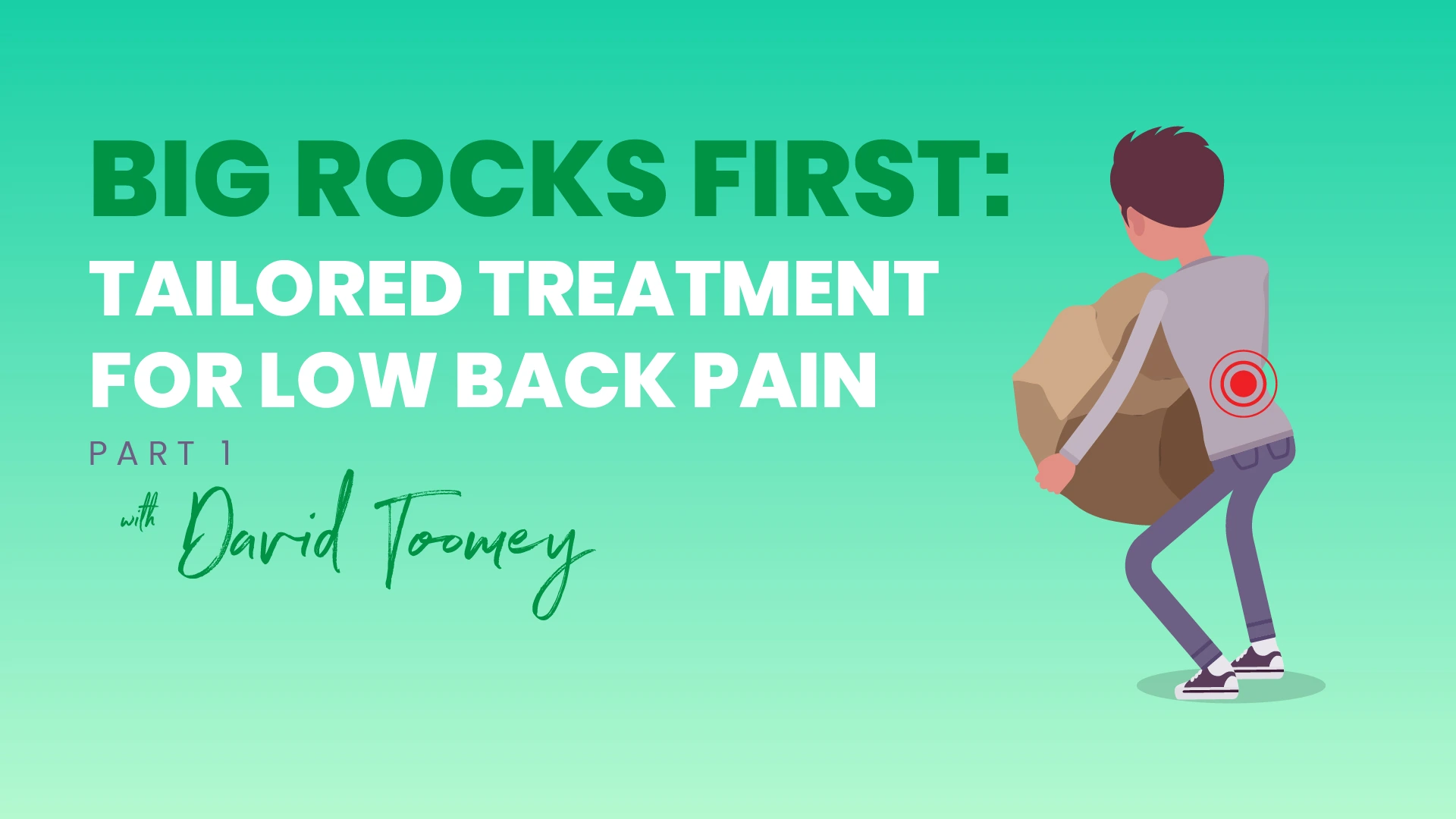Comprehensive and well-reasoned subjective and objective assessments are essential in low back pain patients, but then what?
At times it can seem like a giant leap from our assessment to treatment, without a strong link to the assessment findings or patient goals in between.
With so many options - general exercise, specific exercises, strengthening or control exercises, manual therapy, education, tape or something else - how do you confidently decide what’s best for each patient?
A lot of treatment options seem to be equally effective in the research, but it doesn’t take long to figure out that something that helps one patient is just as likely to stir up another patient.
In Big rocks first: Tailoring low back pain treatment part 1, David Toomey (NZ Titled Musculoskeletal Physio, PhD Candidate) will guide you through a structured, patient-centered approach to low back pain management.
You'll learn how to tailor your treatment to incorporate your patients’ priorities, goals and what’s important to them (their “Big rocks”) — and ensure treatment is logical, clinically reasoned and leads to better treatment outcomes.
What you’ll learn:
🔹 Why standardised, generic care often gets poor results with low back pain, and how tailoring treatment makes a real difference.
🔹 Tailoring treatment: How to bridge the gap from your subjective and objective assessments to a clear, clinically reasoned and effective treatment plan.
🔹 How to avoid common treatment pitfalls that lead to poor outcomes and disappointed patients.
🔹 Case study: Meet Sarah – Follow the journey of a patient struggling with persistent low back pain. See how a patient-centered, big rocks-first approach transformed her treatment plan and recovery.
By the end of this presentation, you’ll have a clear framework for assessing and treating low back pain with confidence, structure, and clinical reasoning—helping you deliver more effective, personalised care.
Stay tuned for Part 2, where David Toomey will share two more case studies and break down how to select the most effective treatment strategies based on patient-specific influencing factors.
Click here to improve your assessment & diagnostic skills with a free trial Clinical Edge membership

